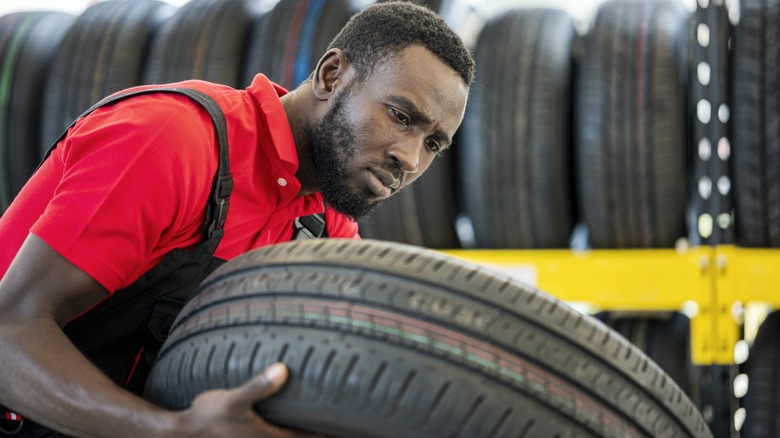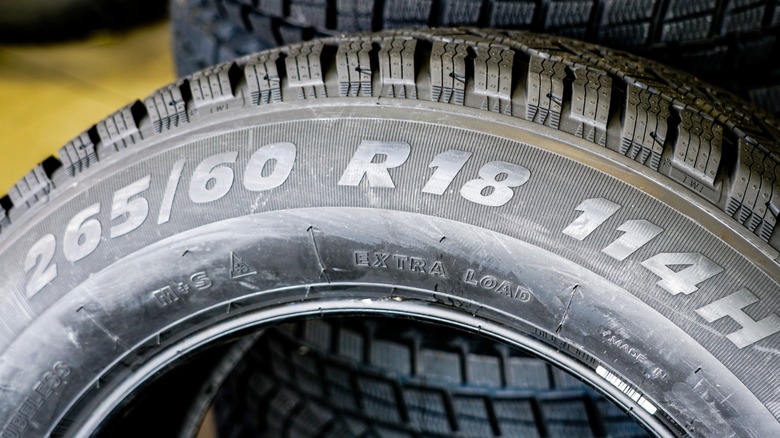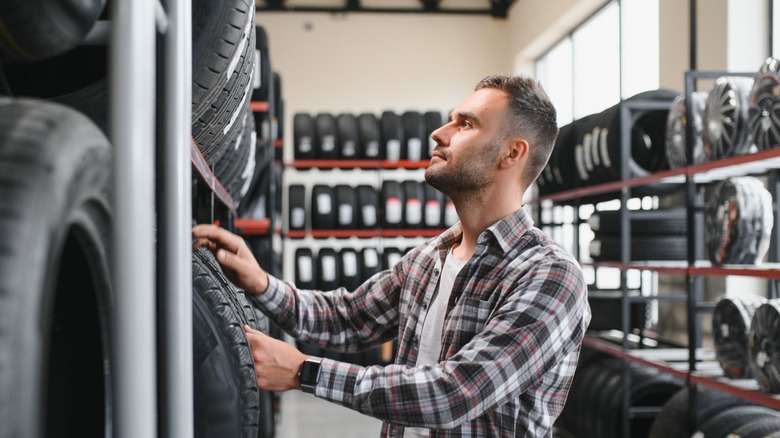Think You Might Be Driving On Counterfeit Tires? Here's How To Spot Fakes
Tires don't usually get as much attention as the engine or the brakes until something goes wrong. But they do more work than most people realize. For starters, they're the only part of your car that touches the road, and that one point of contact plays a big role in how your car moves, stops, and grips the surface, especially when driving conditions become unpredictable. Even your car's fuel economy can change depending on the state of the tires.
That's why fake tires are a big problem. They might look just like original tires. But that doesn't change the fact that they are made with low-quality materials that affect your car's performance. You might notice less grip, especially in the rain. Or your car doesn't stop as quickly. Sometimes, it's that you're getting more flats than usual, or even blowouts. At that point, your car's performance isn't the only thing that's been compromised, it's your safety too.
Unfortunately, spotting fakes isn't the easiest thing to do. These days, fraudulent manufacturers are getting increasingly good at copying everything from tread patterns to sidewall markings and even brand logos. It's hard to know what to look for. The biggest red flag is usually the price. If the tires are priced significantly below market price, you should be wary. But price alone isn't enough to tell a counterfeit tire from an original one. Where you shop matters just as much. But there are some other details you need to look out for when buying car tires.
Take a close look at the tires
Start with the numbers on the tire's sidewall. Every legal tire sold in the U.S. must have a DOT (Department of Transportation) code molded into the rubber. That string of code (which many people also know as the Tire Identification Number (TIN) tells you who made it, where it was made, and the week and year it rolled off the line. If the code is incomplete, looks tampered with, or doesn't match what the brand typically uses, you're most likely looking at a fake. Luckily, many major tire brands let you verify the Tire Identification Number on their websites.
Sometimes, the signs are right there in your face. You might see 'Michelen' instead of 'Michelin,' or 'Firelli' in place of 'Pirelli.' It sounds silly, but it's easy to miss these errors if you're not paying close attention. So, make sure you get a good look. Many brands emboss specific symbols into their tires. For example, you'd always find the little Michelin Man icon on original Michelin tires. If it's missing, that's a red flag. Also check to make sure the tread depth is consistent across the tire. Compare it to official images from the brand's website. Are the grooves identical? Does the pattern match? You might even spot weird spacing or transposed digits in the load index. That's also not a good sign.
Press against the rubber with your fingers. A fake might feel strangely soft or too hard. If you don't have much experience handling tires, it might be hard to tell what a solid tire should feel like. Even people with a lot of experience can't always tell.
Be careful where you shop for tires
All those details from the DOT code to the tread pattern and the spelling errors are only possible to catch when you're buying in person. Online, it's a different ballgame entirely. You can't feel the rubber. You can't inspect the sidewall markings. Once the tires show up at your door, it's often too late. That's why your best bet is to buy from an authorized dealer. That does not include third-party sellers on Amazon or some random vendor on Facebook Marketplace.
They might offer really attractive prices, and the photos on the platform might look legit. But there's a huge possibility that what gets delivered is a knockoff or used set of tires packaged as new. In most cases, these sellers won't have favorable return policies. With dealerships, however, especially the ones listed on the brand's website, you're safer. They get their inventory straight from the tire company.
In fact, if you can order directly from the company's site, even better. You'll be covered under warranty, and you can trust the tire passed through proper quality control. Anywhere else is a real gamble. Take what happened with Consumer Reports, for example. They bought what looked like legit Pegasus Advanta SUV tires from a popular online retailer, only to later find out the tires were counterfeit. That's how easy it is to end up with counterfeit tires and why you're better off sticking to authorized dealers or, even better, buying directly from the manufacturer. Before you even order, check the NHTSA (National Highway Traffic Safety Administration) site to see if that exact tire brand and model has been recalled.


